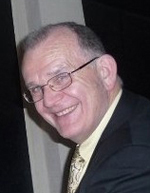Bob Dylan and the Poetry of the Blues
Review by George Fleeton.

Some of the spirit of Bob Dylan was in Down Arts Centre on October 05, mediated for us by a very scholarly audio-visual presentation given by Michael Gray, a Dylanologist.
It suffered a bit from TTTT (Too-much Teacher Talking Time) and from less than enough audio and visual, but the clips we did hear and see reinforced Gray’s thesis that the influence of the Deep South Blues and its lyric poetry on Dylan’s music was immense, undervalued and relatively unexplored by others.
The argument was convincing, the anecdotal backgrounding was fluent and humorous, and the delivery was stylish, but two hours was, by Gray’s own admission, less than adequate to dig beneath the surface of Dylan’s iconic song writing and music making.
Big Joe Williams, Jimmy Reed, Memphis Minnie and Blind Willie McTell were all generously referenced, representing as they do that bedrock of the blues which Dylan mined so deliberately.
The Dylan acoustic-electric-Judas issues were briefly but well analysed, and just a few of the studio albums recommended for our collections: Blonde on Blonde (1966), Blood on the Tracks (1975), Infidels (1983), Love and Theft (2001) but not, apparently, his latest, Tempest, released last month, nor his first, from 1962, which included Song to Woody (Guthrie).
Now 71, Bob Dylan’s most radical heyday is still widely considered to be the early 1960s (what he himself refers to as ‘the real late Fifties’), because after his motorbike accident in 1966, his trail blazing incendiary music making changed measurably, and new songs for live audiences become his lodestar, from 1974 and right on into the so-called Never Ending Tour, now 24 years on the road
Dylan is insistent that his songs are ‘Personal music, they’re not communal. I wouldn’t want people singing along with me. It would sound funny. I’m not playing campfire meetings’.
To which one could add that nobody writes the kind of songs he writes by just being a conventional sort of songwriter, and nobody will write them like this again.
All this helped me to understand the disappointment felt at a Dylan concert in Dublin in May 2009, part of the Never Ending Tour.
If he had deigned to address the capacity audience, even once that night, might this have been his stance? – ‘A performer, if he’s doing what he’s supposed to do, doesn’t feel any emotion at all. What others think about me, or feel about me, that’s so irrelevant… People love the music and the songs I play, not me,’
Dylan has too much rock and roll in his blood to call himself a blues singer: ‘Country blues, folk music and rock ‘n’ roll make up the kind of music that I play’, he said recently, and each of those genres or sub-sets has, in my view, its own dark territory over which Dylan’s transfigurative faith still rules.
As Miles Davis once remarked: ‘Music is best heard in the moments in which it is performed, that’s where music is truly alive’.
Teacherly Michael Gray simply didn’t have time to cover all the bases in Dylan’s life and work but what we got on the night was value for money.
Missing was a discussion on the central roles of banjo and harmonica in the delivery of blues lyric poetry (and how that crossed over, for example, to Ennio Morricone’s use of those instruments in his film scores for four of Sergio Leone’s spaghetti westerns).
And it would have been intriguing to hear Gray’s take on the 1961 death of the other Robert Zimmerman (the Hells Angel with the same name) within weeks of our Bob ‘Robert Allen Zimmerman’ Dylan’s first big break, and his subsequent, self-styled transfiguration which he has defined as:
‘What allows you to crawl out from under the chaos and fly above it’.
Ah well, let’s hope none of you ever shared my first introduction to this genius.
It was in Paris, about Halloween 1973, and the new film du jour that week was Sam Peckinpah’s Pat Garrett and Billy the Kid in which Dylan had a few lines, as a marginal character called Alias, and a decent song called Knockin’ on Heaven’s Door.
His performance as an actor was truly, madly, embarrassingly awful, in a film that has since become a cult classic.
What then was all this Dylan fuss about? It took me another 35 years playing catch up to appreciate this clone of Mozart.
Dylan said recently that his folk song Delia, one of those with a hard ending (from the World Gone Wrong album in 1993), was one of his favourites.
That’ll have to do for a while. Small mercies, so.
George Fleeton writes independently on arts and culture.


























